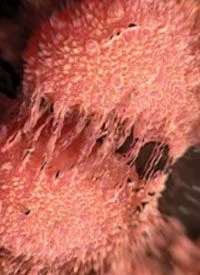Radiotherapy Use in ATLAS Is Reflective of Current Guidance in High-Risk Localized Prostate Cancer
Apalutamide plus androgen deprivation therapy and radiotherapy was evaluated in patients with high- and very high–risk localized or locally advanced prostate cancer, with RT schedules that are reflective of recommended practice guidelines.

Apalutamide (Erleada) plus androgen deprivation therapy and radiotherapy (RT) was evaluated in patients with high- and very high–risk localized or locally advanced prostate cancer, with RT schedules that are reflective of recommended practice guidelines, according to findings from a review of the phase 3 ATLAS trial (NCT02951052) presented at the 2022 ASCO Annual Meeting.
“ATLAS is an example of how RT can be included in phase 3 trials of HRLPC in combination with next-generation hormonal therapy,” the study authors wrote in a poster of the study.
The current treatment approach for patients with high-risk localized or locally advanced prostate cancer (HRLPC) comprises androgen deprivation therapy (ADT) combined with radiotherapy (RT).
Although effective in some patients, ADT plus RT doesn’t significantly reduce the risk for metastases and death.
In the ATLAS trial, investigators are assessing if adding apalutamide (Erleada) to ADT (gonadotropin-releasing hormone agonist [GnRHa]) and external beam radiation therapy (EBRT) is feasible in patients with high-risk disease.
A total of 1,503 patients (median age, 67 years) are currently enrolled onto the trial. A total of 89% and 11% of patients have an ECOG PS of 0 or 1, respectively. In regard to tumor classification, 66% are high-risk and 34% are very high-risk. Median PSA is 6.3 ng/mL and cT2 in 44%, CT2 in 50% and cN1 in 13%.
“Baseline characteristics demonstrate high- and very higher-risk features of prostate cancer and pelvic nodal involvements in patients undergoing primary RT in clinical practice,” the researchers wrote.
In 90% of patients included in the study, RT use was standard EBRT to prostate/pelvis over 6-8 weeks (cumulative 78-81 GY); in 10% of patients recent hypofractionation schedules were applied, and 5.6% had EBRT combine with brachytherapy.
“The RT schedules applied reflect recent evidence and guideline changes for the use of hypofractionation in this patient population,” the researchers wrote.
Patients were randomized to APA or placebo plus GnRHa for 30 (28-d) treatment cycles. All patients received GnRHa and primary RT as standard of care. And the placebo group also received bicalutamide in the neoadjuvant setting, concurrent with RT.
The authors noted that the RT schedules in ATLAS mimic recent evidence and guideline changes for the use of hypofractionation in this group of patients.
Reference
- Sandler H, Freedland S, Shore N, et al. Patient (pt) population and radiation therapy (RT) type in the long-term phase 3 double-blind, placebo (PBO)-controlled ATLAS study of apalutamide (APA) added to androgen deprivation therapy (ADT) in high-risk localized or locally advanced prostate cancer (HRLPC). J Clin Oncol. 2022; 40(suppl_16):5084. doi: 10.1200/JCO.2022.40.16_suppl.5084



